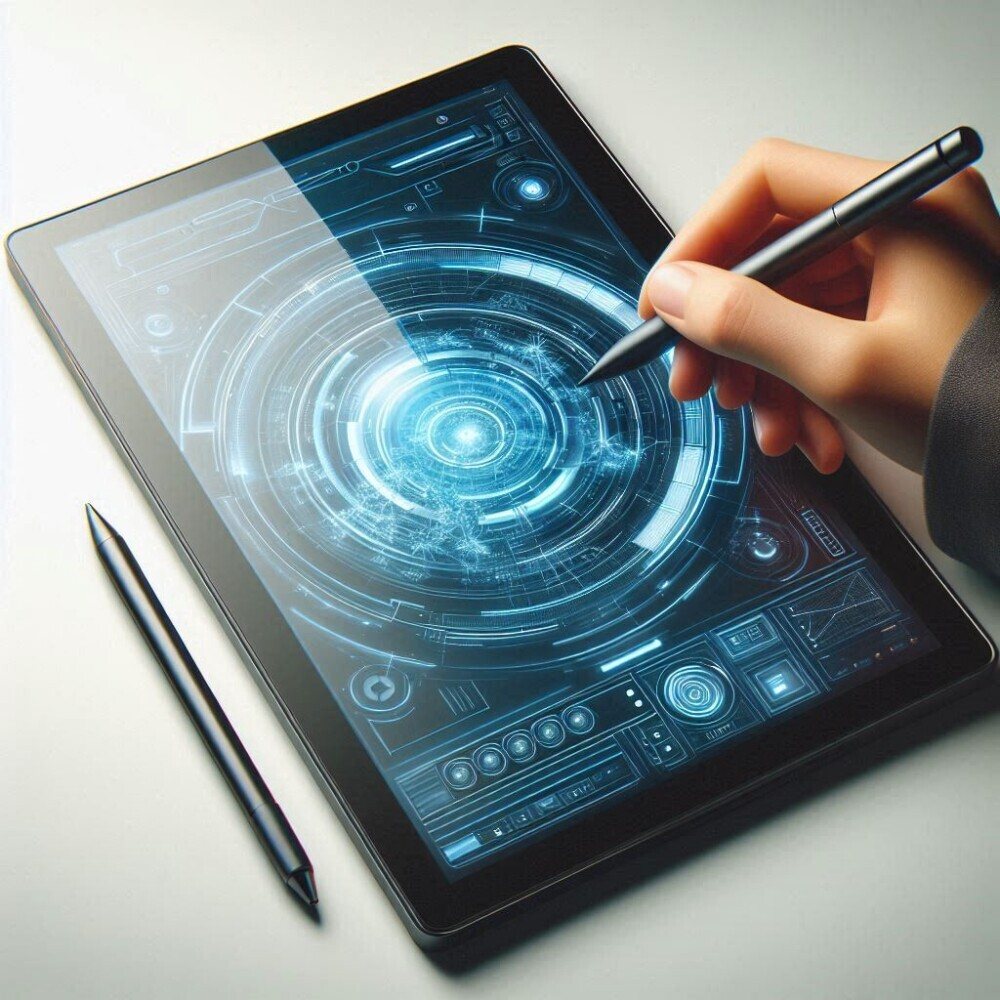iPads have changed a lot since they first hit the shelves, revolutionizing how we interact with technology at home and on the go.
Each new release brings something fresh, capturing the attention of different age groups and professions.
Understanding the leap from the 5th to the 10th Generation offers a look into this evolution.
The 5th Generation iPad, released in March 2017, made waves for its budget-friendly price and solid performance.
It featured a 9.7-inch Retina display, an A9 chip, and up to 128GB of storage.
More than just specs, it offered a familiar design and reliable battery life, making it a dependable choice for students and professionals who didn’t need the latest extras.
Here is the summary of the iPad 5th Generation:
Model: iPad 5th Generation (2017)
Display
• 9.7-inch (diagonal) LED-backlit Multi-Touch display
• 2048 x 1536 resolution at 264 pixels per inch (ppi)
• Retina display
• Fingerprint-resistant oleophobic coating
Chip
• A9 chip with 64-bit architecture
• Embedded M9 coprocessor
Storage
• 32GB or 128GB
Cameras
Rear Camera:
• 8MP camera
• ƒ/2.4 aperture
• Live Photos
• Autofocus
• 1080p HD video recording
Front Camera:
• 1.2MP FaceTime HD camera
• 720p HD video recording
Security
• Touch ID fingerprint sensor
Connectivity
• Wi-Fi (802.11a/b/g/n/ac); dual band (2.4GHz and 5GHz)
• Bluetooth 4.2 technology
• Optional: Wi-Fi + Cellular models
Battery
• Built-in 32.4-watt-hour rechargeable lithium-polymer battery
• Up to 10 hours of surfing the web on Wi-Fi
• Charging via power adapter or USB to computer system
Dimensions
• Height: 9.4 inches (240 mm)
• Width: 6.6 inches (169.5 mm)
• Depth: 0.29 inch (7.5 mm)
Weight
• Wi-Fi model: 1.03 pounds (469 g)
• Wi-Fi + Cellular model: 1.05 pounds (478 g)
Operating System
• Ships with iOS 11
In the Box
• iPad
• Lightning to USB Cable
• 12W USB Power Adapter

Fast forward to the 10th Generation iPad, launched in October 2022, and you’ll see significant upgrades.
The buzz around this device isn’t just about its larger 10.9-inch Liquid Retina display or the A14 Bionic chip that promises 40% faster performance compared to its predecessors.
It’s more about how it meets the expectations of a modern user who values speed, efficiency, and a sleek design.
This generation aligns itself perfectly with higher demands for multitasking and media editing.
Here’s the specification for the iPad 10th Generation (2022):
Model: iPad 10th Generation (2022)
Display
• 10.9-inch Liquid Retina display
• LED-backlit Multi-Touch display with IPS technology
• 2360 x 1640 resolution at 264 pixels per inch (ppi)
• True Tone display
• 500 nits brightness
• Fingerprint-resistant oleophobic coating
• Fully laminated display
• Anti-reflective coating
Chip
• A14 Bionic chip
• 6-core CPU
• 4-core GPU
• 16-core Neural Engine
Storage
• 64GB
• 256GB
Cameras
Front Camera:
• 12MP Ultra Wide camera
• 122° field of view
• ƒ/2.4 aperture
• Center Stage support
• 1080p HD video recording at 25 fps, 30 fps, or 60 fps
Rear Camera:
• 12MP Wide camera
• ƒ/1.8 aperture
• Smart HDR 3 for photos
• 4K video recording at 24 fps, 25 fps, 30 fps, or 60 fps
• 1080p HD video recording at 25 fps, 30 fps, or 60 fps
• Extended dynamic range for video up to 30 fps
• Slo-mo video support for 1080p at 120 fps
Security
• Touch ID in the top button
Connectivity
• Wi-Fi 6 (802.11ax)
• Bluetooth 5.2
• Optional 5G cellular models (sub-6 GHz)
• USB-C port
Audio
• Landscape stereo speakers
• Dual microphones for calls, audio recording, and video recording
Battery
• Built-in 28.6-watt-hour rechargeable lithium-polymer battery
• Up to 10 hours of web surfing on Wi-Fi
• Up to 9 hours on cellular data network
• Charging via USB-C port (20W adapter sold separately)
Dimensions
• Height: 9.79 inches (248.6 mm)
• Width: 7.07 inches (179.5 mm)
• Depth: 0.28 inch (7 mm)
Weight
• Wi-Fi model: 1.05 pounds (477 g)
• Wi-Fi + Cellular model: 1.06 pounds (481 g)
Operating System
• Ships with iPadOS 18
Apple Pencil Support
• Apple Pencil (1st generation) with USB-C to Apple Pencil Adapter
• Apple Pencil (2nd generation) not supported
Keyboard Support
• Magic Keyboard Folio
• Bluetooth keyboards
Colors Available
• Blue, Pink, Silver, Yellow
In the Box
• iPad
• USB-C Charge Cable (1 meter)
• 20W USB-C Power Adapter
• Documentation

Key Improvements over 5th Generation:
• Larger 10.9-inch display (up from 9.7-inch)
• A14 Bionic chip (up from A9)
• Landscape front camera
• USB-C port (replacing Lightning)
• Modern design with flat edges
• Touch ID moved to the top button
• New Magic Keyboard Folio support

Keeping up with these trends shows Apple’s knack for anticipating market shifts and consumer needs.
The jump from the 5th to 10th Generation highlights these trends—shifts towards bigger, better displays, faster processors, and more extensive connectivity options, like 5G support in the newer models.
With these differences framed, understanding which iPad suits your lifestyle becomes clearer.
Whether you prefer lightweight reading on the 5th Gen or need a robust workhorse with the 10th, knowing these changes helps guide you in making the right purchasing decision.
Specifications Breakdown: Transformative Features Across Generations

Comparing the hardware of the 5th and 10th Generation iPads sheds light on how far the technology has leaped within a few years.
The 5th Gen iPad, with its 9.7-inch Retina display, offered a crisp, clear view but was not the sleekest in edge-to-edge design.
The A9 chip inside was powerful enough for everyday tasks, apps, and even some gaming, but it pales compared to today’s standards.
In contrast, the 10th Gen iPad comes packed with a 10.9-inch Liquid Retina display that not only increases viewing space but ramps up the visual quality with better color accuracy and brightness.
Inside, the A14 Bionic chip raises the stakes with significantly faster performance, allowing for seamless multitasking and more demanding app usage — a step up that’s especially useful for creative work or intense processing tasks.
Storage has seen a boost too: where the 5th Gen maxed out at 128GB, the 10th Gen starts from 64GB and scales up to larger capacities, catering to those who store more apps, media, or files on their device.
One of the most critical areas of advancement has been in connectivity.
While the 5th Gen supported basic Wi-Fi, the 10th Gen supported 5G, offering blazing-fast internet speeds wherever the network is available.
This modern connectivity feature ensures the newest iPad can keep up with today’s rapid digital pace.
Thinking about these improvements, it’s clear that figuring out which iPad suits you depends heavily on how you use your device.
If the primary goals involve simple browsing, reading, or some light app usage, the 5th Generation might still tick the boxes.
But for those looking toward high performance, increased storage, and global connectivity, the 10th Generation feels positioned to handle what comes next in digital innovation.
In-depth Comparison: Which iPad Stands Out?

Evaluating the differences in performance between Apple’s 5th and 10th Generation iPads reveals just how much technology can advance in a few years.
The 10th Gen’s A14 Bionic chip ensures a significant speed boost. This means smoother app transitions and less wait time during intensive tasks like video editing or graphic design.
The 5th Gen, equipped with the A9 chip, handles everyday activities well enough but shows its limitations with more demanding applications.
Design is another area where changes are noticeable. The 5th Gen iPad retains the traditional bezel-heavy look, a far cry from the 10th Gen’s sleek, modern appearance.
This newer design not only looks better but also offers a larger screen size thanks to reduced bezels, enhancing immersive experiences like gaming or streaming movies.
Battery life can make or break a device experience, and while both generations are noted for their reliability, the 10th Gen tends to last longer under heavy use.
This advantage might appeal to users who are on the go and can’t afford to keep recharging.
Looking at cost-effectiveness, the 5th Gen iPad often appeals as a budget-friendly option with a focus on essential functionality.
However, the 10th Gen provides better longevity and future-proofing, potentially offering more value over time for those who can afford the initial investment.
Choosing between these two depends on your priorities.
For basic use, the 5th Gen still gets the job done at a lower initial cost. But if future-proofing and cutting-edge tech is what you’re after, investing in the 10th Gen proves wise.
Think about your usage patterns and how they might evolve—this will guide you in making a well-informed purchase decision.
Support & Longevity: What Each iPad Tells Us

A key aspect when choosing an iPad involves understanding the support and longevity offered by Apple.
The 5th Generation iPad, although no longer the latest model, continues to receive software updates from Apple, albeit with some limitations regarding the newest features.
This continued support ensures the device remains functional and secure for everyday tasks, though it might not always leverage the latest iOS innovations.
When it comes to the 10th Gen iPad, users can expect it to stay relevant for years to come, given Apple’s track record of supporting devices well beyond their release dates.
With its cutting-edge hardware, this iPad is well-equipped to handle future software updates, making it a sustainable choice for those planning to keep their device over the long haul.
Sustainability isn’t just about software updates, though.
The environmental impact of devices becomes increasingly important, and the 10th Gen iPad makes strides with more eco-friendly manufacturing processes and materials.
Aligning with eco-conscious consumers, this generation reflects a commitment to reduced carbon footprints and recyclable materials, making it a responsible choice for the environmentally aware buyer.
Deciding between the 5th and 10th Gen iPads also involves considering your specific needs.
For users whose needs will remain stable, sticking with the 5th Gen and its continued support might be perfectly adequate.
However, for those who anticipate change, either personal or professional, the longer potential lifespan and enhanced capabilities of the 10th Gen may provide better value in the long run.
Frequently Asked Questions and Consumer Insights
Many people wonder if the 5th Generation iPad still holds its ground in today’s tech landscape.
Yes, it can satisfy basic needs like surfing the web, streaming, and light productivity tasks.
However, compatibility with the latest iOS features is somewhat restricted, which might influence your decision if you’re keen on using newer apps or functionalities.
The 10th Generation iPad, with its robust capabilities, appeals to users requiring more horsepower for complex apps and creative work.
It stands out for offering a seamless experience for both personal and professional use, making it a worthy investment for those who prioritize long-term tech sustainability.
User experiences often highlight the 5th Gen’s ease of use and value for basics but emphasize the 10th Gen’s versatility and performance edge.
Decisions hinge primarily on individual use cases—light users might save money with the 5th Gen, whereas power users could benefit immensely from the 10th Gen.
For many consumers, these choices can be daunting. Expertise suggests evaluating your immediate needs and potential for future shifts in how you use your tech.
Expert opinions and user reviews underline this approach, validating the decision to either maximize value with the 5th Gen or embrace innovation with the newer model.
Ultimately, choosing the right iPad involves balancing current functionality with future readiness.
Understanding these variables will guide you toward the ideal purchase, ensuring satisfaction both today and down the line.


